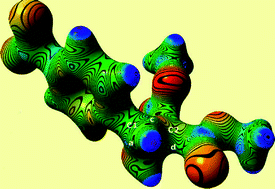A comparative study on the experimentally derived electron densities of three protease inhibitor model compounds†
Abstract
In order to contribute to a rational design of optimised

* Corresponding authors
a Freie Universität Berlin, Institut für Chemie und Biochemie/Kristallographie, Fabeckstr. 36a, Berlin, Germany
b Universität Würzburg, Institut für Pharmazie und Lebensmittelchemie, Am Hubland, Würzburg, Germany
c Georg-August-Universität, Institut für Anorganische Chemie, Tammannstr. 4, Göttingen, Germany
d Aarhus University, Department of Chemistry, Langelandsgade 140, Aarhus C, Denmark
e c/o HASYLAB/DESY, Notkestr. 85, Hamburg, Germany
f
Universität Hamburg, Mineralogisch-Petrologisches Institut, Grindelallee 48, 20146 Hamburg, Germany
E-mail:
luger@chemie.fu-berlin.de
Fax: +49 30 83853464
Tel: +49 30 83853411
In order to contribute to a rational design of optimised

 Please wait while we load your content...
Something went wrong. Try again?
Please wait while we load your content...
Something went wrong. Try again?
S. Grabowsky, T. Pfeuffer, W. Morgenroth, C. Paulmann, T. Schirmeister and P. Luger, Org. Biomol. Chem., 2008, 6, 2295 DOI: 10.1039/B802831A
To request permission to reproduce material from this article, please go to the Copyright Clearance Center request page.
If you are an author contributing to an RSC publication, you do not need to request permission provided correct acknowledgement is given.
If you are the author of this article, you do not need to request permission to reproduce figures and diagrams provided correct acknowledgement is given. If you want to reproduce the whole article in a third-party publication (excluding your thesis/dissertation for which permission is not required) please go to the Copyright Clearance Center request page.
Read more about how to correctly acknowledge RSC content.
 Fetching data from CrossRef.
Fetching data from CrossRef.
This may take some time to load.
Loading related content
